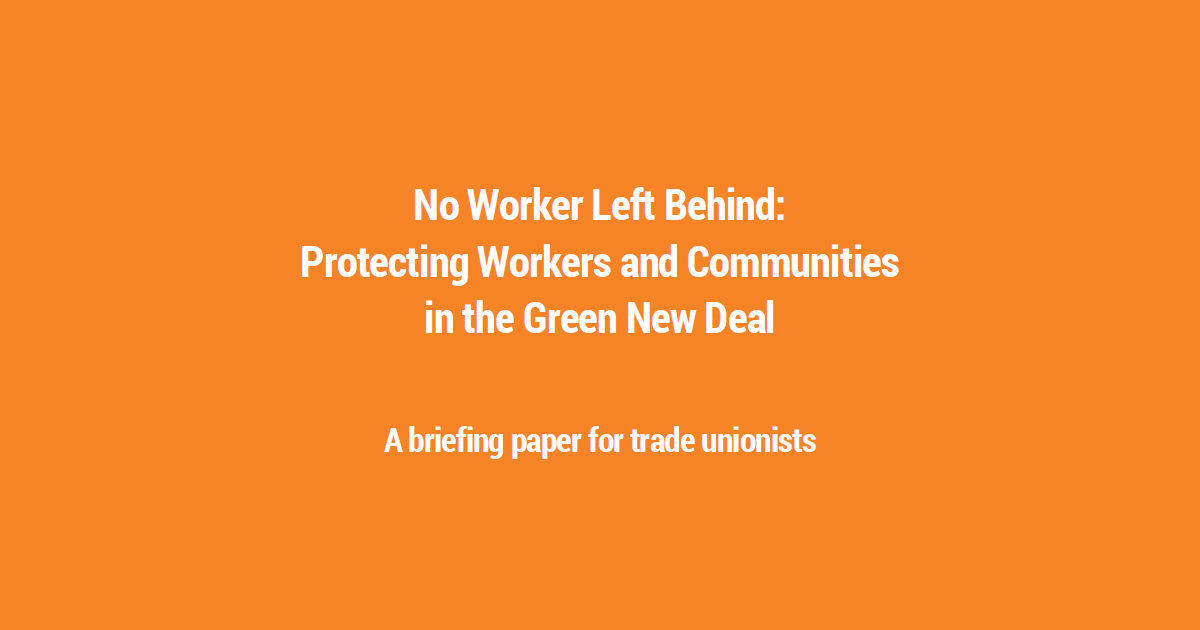
What will happen to workers in fossil fuel related industries if the shift to a climate-safe economy threatens their jobs?
While it is easy to advocate for a “just transition,” it is not so easy to spell out just how that can be accomplished. Proposals for a Green New Deal have often been criticized as too vague to provide protections that workers and unions can count on. AFL-CIO president Richard Trumka, for example, told the Economic Club of Washington, D.C., “We would want a whole lot of changes made so that workers and our jobs are protected in the process.”
The Labor Network for Sustainability has just issued a briefing paper for trade unionists called “No Worker Left Behind: Protecting Workers and Communities in the Green New Deal.” The paper lays out the basic elements that have been proposed to protect the well-being of workers and communities who may be adversely affected by aspects of the GND and the transition to a climate-safe economy. It summarizes how each of the plans would go about protecting workers and communities whose jobs may be threatened. An Appendix provides excerpts from the texts from which these summaries are extracted.
The elements it includes are:
- Initial social safety net
- Workplace transition plan
- Wage guarantee/insurance
- Education and job training
- Priority job placement
- Pension and benefit support
- Health care
- Community investment
The briefing paper also addresses what these programs will cost and how we can pay for them.
“No Worker Left Behind” identifies policies that could be actionable by GNDs at national and state levels. It focuses on proposals that are or could be readily translated into legislation and executive orders. It presents a compendium of strategies and programs from which future shapers of the GND can select and combine to forge the best possible program to protect workers and communities.